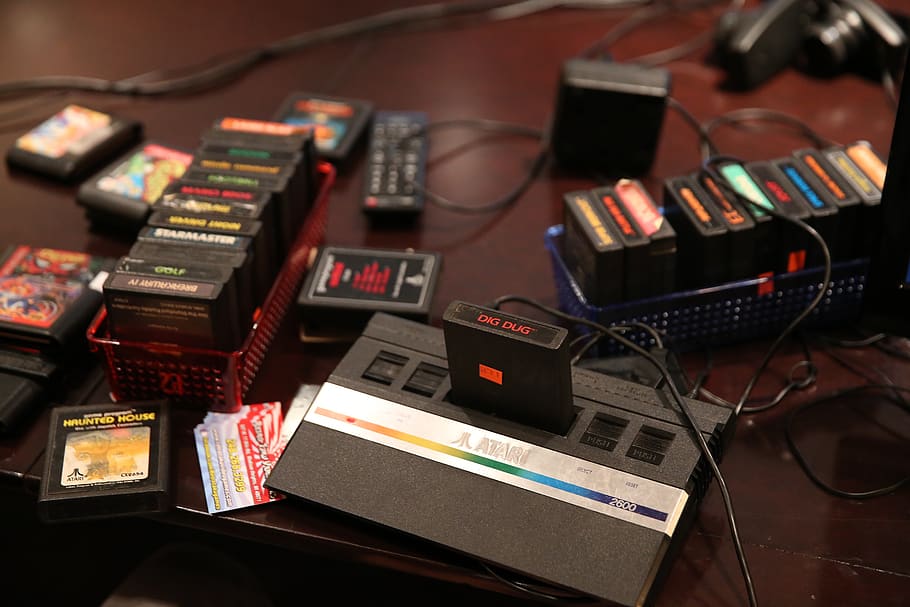
The global gaming industry is in rude health. That’s the view of many market analysts, who’ve recently assessed its market value and potential revenues.
According to Newzoo’s Global Games Market Report for 2024, the industry will yield $187.7 billion this year alone, representing a rise of 2.1% year-on-year. It also anticipates no fewer than 3.4 billion people being captivated by all forms of gaming worldwide.
Almost half of all global spending on gaming is derived from consumers based in the U.S. and China. This year, the American and Chinese gaming markets will generate $47 billion and $45 billion respectively.
The reality is that today’s gaming industry would be nowhere without a string of technological breakthroughs which have revolutionised the gaming world for all generations. Within this article, we’ll explore the biggest game-changers across all forms of gaming, working in chronological order from the earliest innovation to the most recent.
The creation of the roulette wheel
One of the most significant breakthroughs in the world of casino gaming was the development of the roulette wheel. The origins of the roulette wheel have been traced back as far as the 1600s, when mathematician, Blaise Pascal, stumbled upon the design in his quest to build the world’s inaugural perpetual motion device.
Of course, we now know that perpetual motion is not physically possible, but Pascal’s failed endeavours led him to create what would become one of the most popular casino games of all time.
The design and operation of the roulette wheel created a game where randomness meets strategy. The wheel mechanism has long been trusted for its fairness and unpredictability. Even at the dawn of online casino gaming, roulette games continued to proliferate, powered by decentralised random number generators (RNGs) to replicate the random nature of real-world games. Today, online casino software providers continue to tweak the possibilities of this game with all kinds of variants listed within the game libraries of iGaming operators.
The rise of arcade and pinball machines
In the 1970s and early 80s, the development of arcade machine cabinets was a game-changer for the gaming industry. Gaming arcades became social hubs, where players with mutual passions could play side by side and, in some cases, compete against one another in the first examples of competitive gaming (which is known as Esports today).
Prior to arcade machines, pinball machines – introduced in the 1930s and 40s – were the forerunners of 20th century arcade gaming. With a blend of randomness and physical skill, gamers were drawn to its challenges, as well as its appealing visuals and audio. In many ways, pinball machine cabinets laid the foundations for arcade technology, showing the way for engaging, sensory-rich gaming experiences.
Home gaming consoles
Home game consoles were the natural evolution from arcade machines. In fact, they arrived before the height of the arcade gaming scene when Atari unveiled the Atari 2600 in 1977. Video games were being replicated onto 8-bit cartridges, capturing the imagination of households worldwide, and cementing gaming at the heart of popular culture.
Following the commercial success of Atari, Japan-based Nintendo set out on a similar path, with their Nintendo Entertainment System (NES) rocking the 1980s, along with Sega’s Master System and Mega Drive. Sony got in on the act with the PlayStation in 1994. Fast forward to the present day and we’re now on the fifth iteration of the Sony PlayStation, which has shifted around 62 million units worldwide.
LAN and online gaming
In between the success of the NES and the latter iterations of the PlayStation and Microsoft’s Xbox consoles, online multiplayer gaming also reared its head on desktop PC. Thanks to the advancement of local area networks (LAN) and improved internet speeds, players could compete in real time online.

Either side of the millennium, competitive games like Counter-Strike and Quake would set the tone for first-person competitive gaming. Meanwhile the likes of World of Warcraft also ushered in a new wave of massively multiplayer online role-playing games (MMORPGs).
Responsive smartphone games
Undoubtedly the most recent technological advancement for the gaming industry has been mobile-first games. HTML5 technology has made it possible for game developers like Forte to design and build games optimised for any smartphone or tablet screen. This alone has created a new, thriving casual gaming niche which Statista currently projects will be worth almost $26 billion by 2029.
Without continual innovation, the gaming industry would stand still. Thanks to multiple technological advancements, the cat is well and truly out of the bag now. Given the demand and riches in store for game developers and publishers, there’s huge incentives to continue pushing the boundaries of gaming entertainment.



